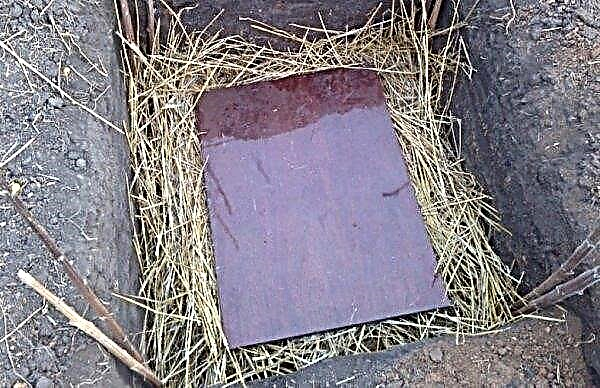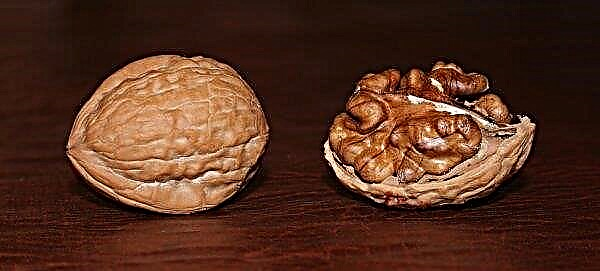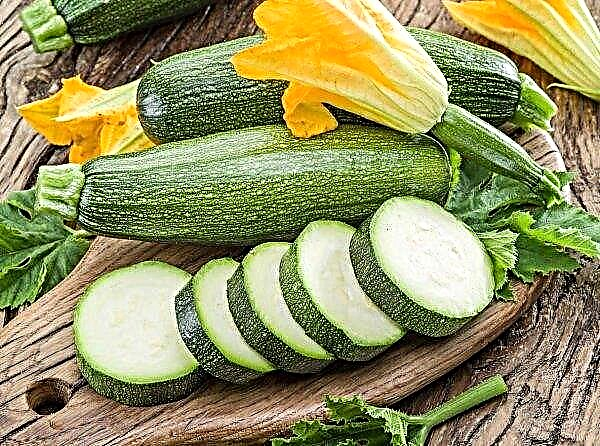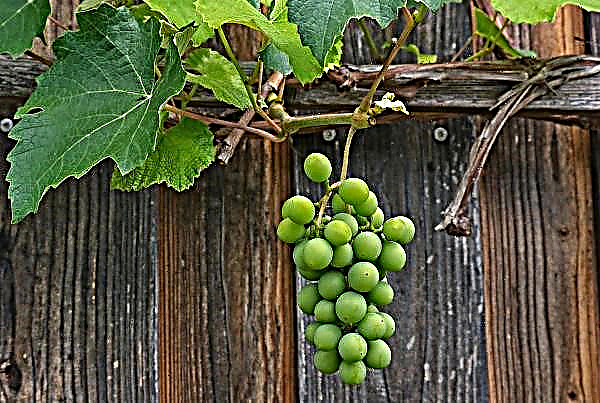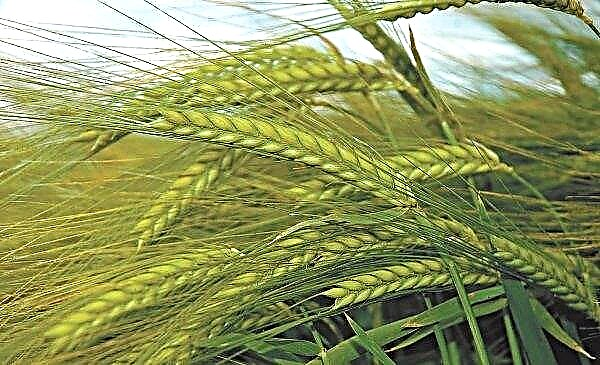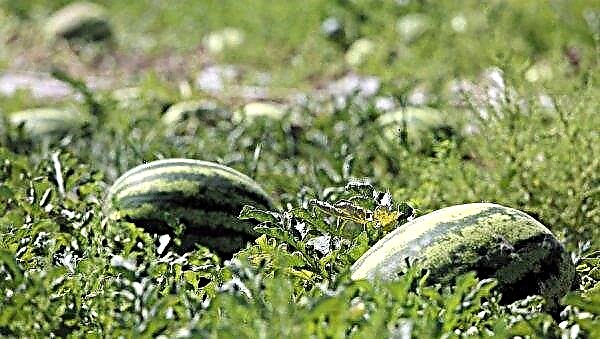Tamariscofolia Juniperus sabina - this is the full name of the representative of conifers, which is planted in gardens and household plots. Popular, both among professionals and amateurs. In the article you will find a description of the tree, how to plant it in your garden and properly care for it.
Botanical Description
Juniper grows in the form of a shrub about 1-2 m high. Sometimes you can see trees up to 4 m high, which sprout in the wild. But the shape of the tree trunk has deformations and curved branches, like a bush. It grows by 10-15 cm per year. The life cycle in a permanent place is about 30–35 years.
Did you know? Juniper exists on our planet for about 50 million years.
In late March or early April, the juniper is covered with flowering. Fruits are rounded, 5–7 mm in diameter and change their color from gray-green to dark blue. When the fruits have ripened, they are covered with natural wax, which gives them a touch of blueness. The roots of the bush develop inland, which helps to take root even on stony soils and get the right amount of water.
Shrub Characteristics:
- undemanding to the composition of the soil;
- does not need special care;
- frost-resistant, tolerates temperatures up to –30 ° C;
- tolerates dry and windy weather.
Landing
To plant a plant, you do not need special knowledge or the formation of a gardener. It is only necessary to find a place, the right seedling and to allocate a little time for this.
Video: planting and caring for juniper
Seedling preparation
Before planting, it is necessary to remove the roots of the seedling from the pot and place them in a container with warm water for 3-4 hours. After this time, the root system needs to be treated with a root. The product can also be mixed with the water in which they were soaked.
Site selection and preparation
The area for planting a seedling should be sufficiently lit or semi-shaded. The main thing is that the bush receives the right amount of sunlight. Next, you need to dig holes or trenches for planting.
Did you know? For the first time, the healing properties of juniper have been documented used in ancient Egypt, Greece and Rome.
If seedlings will be planted for a hedge, then there must be a distance of more than 60 cm between them. For trees or bushes that will grow alone, this distance increases to 1.5–2 m.
Landing process
When the preparation of the place and the seedling has finished, you can proceed to the planting itself.
It is simple, you just need to follow a few steps:
- At the bottom of the recess, which was prepared for planting, drainage is installed from broken brick or coarse sand.
- An embankment is made on the drainage layer, for which peat, sand and sod land are used.
- Next, a seedling is placed, placing the roots on the surface of the hill.
- The recess falls asleep. Make sure that the root neck is at ground level.
- Pour a circle around the trunk using about 5-10 liters of water.

Juniper Care
Juniper Cossack unpretentious and does not require special care. But still, you must not forget about a few rules and recommendations so that the plant pleases its growth and appearance for a long time.
Watering
It is necessary to water the plant more often in the first 14 days, after planting in a permanent place. To do this, you need to water the stem circle once every 3 days using 5 liters of water. After this period, watering is necessary no more than 1 time in 3 months. Using for watering about 10-15 liters of water. In the rainy season, it is better to reduce watering, since the juniper does not like too wet soil.
Top dressing
In early spring, they begin to feed with fertilizers containing minerals. In the last days of April, Kemira Suite is added. To feed one bush, it is necessary to dissolve 20 g of the product in 10 l of water.
Loosening and mulching
Loosening the soil around the sabine juniper is necessary after weeds have been ripped out and irrigated. This stimulates the roots to receive oxygen, which is so necessary for growth. When the seedling is planted, you need to mulch the earth around the trunk. To do this, lay a layer of peat 3-5 cm wide.
Pruning
Juniper does not need frequent pruning of shoots, as it is characterized by very slow growth. Often branches are shortened in the spring each year. The ends of the bush are removed, while forming the desired appearance. Perhaps the direction of the needles to create a design idea.
Important! The ends that have been trimmed must be coated with resin.
Winter preparations
In order for the plant to feel comfortable in winter frosts, it is necessary to help him in this. Gardeners advise to remove bushes with damage or with obvious signs of the disease from the site. Trim the ends of the branches, as is done when making the crown and treat with alcohol. Then warm the soil around the trunk with branches of spruce. The juniper does not need additional shelter, as it tolerates temperatures up to -30 ° C.
Video: preparing juniper for winter
Possible diseases and pests
Like many conifers, juniper is prone to sunburn, which provokes the loss of needles. Most often this happens in the spring, when the sun shines brightly. To avoid this, you need to cover the plant with a shaded net and pour it with warm water.
Also, the bush is susceptible to fungal diseases. A sign of fungus is the yellowing of the crown. Fungal infections kill the plant for 2–2.5 years. To combat the fungus, parts of the crown that are affected by the fungus are trimmed. Cut points with alcohol.
Breeding methods
You can propagate the plant using:
- cuttings;
- seeds;
- layering.
 Rooting occurs faster when using cuttings. 2 years after they take root, you can plant in a permanent place.
Rooting occurs faster when using cuttings. 2 years after they take root, you can plant in a permanent place.
Use in landscape design
Juniper Tamariscifolia is used for planting on alpine hills, stone slopes and meadows. Due to its attractiveness, it becomes an indispensable element of decor. The plant is great for hedges, with which the sites are divided into zones.
Important! When choosing a place to plant, do not forget that the fruits of juniper are poisonous to the human body.
A plant growing in pots is used to decorate paths near buildings, spacious balconies and memorials. Compositions consisting of juniper are also distinguished by their effectiveness and beauty. The shrub looks great with other summer plants, bushes and trees. Juniper Tamariscifolia is often used in landscape design, because it is not very moody for planting and care. It grows for a long time and can decorate any areas.
Juniper Tamariscifolia is often used in landscape design, because it is not very moody for planting and care. It grows for a long time and can decorate any areas.


